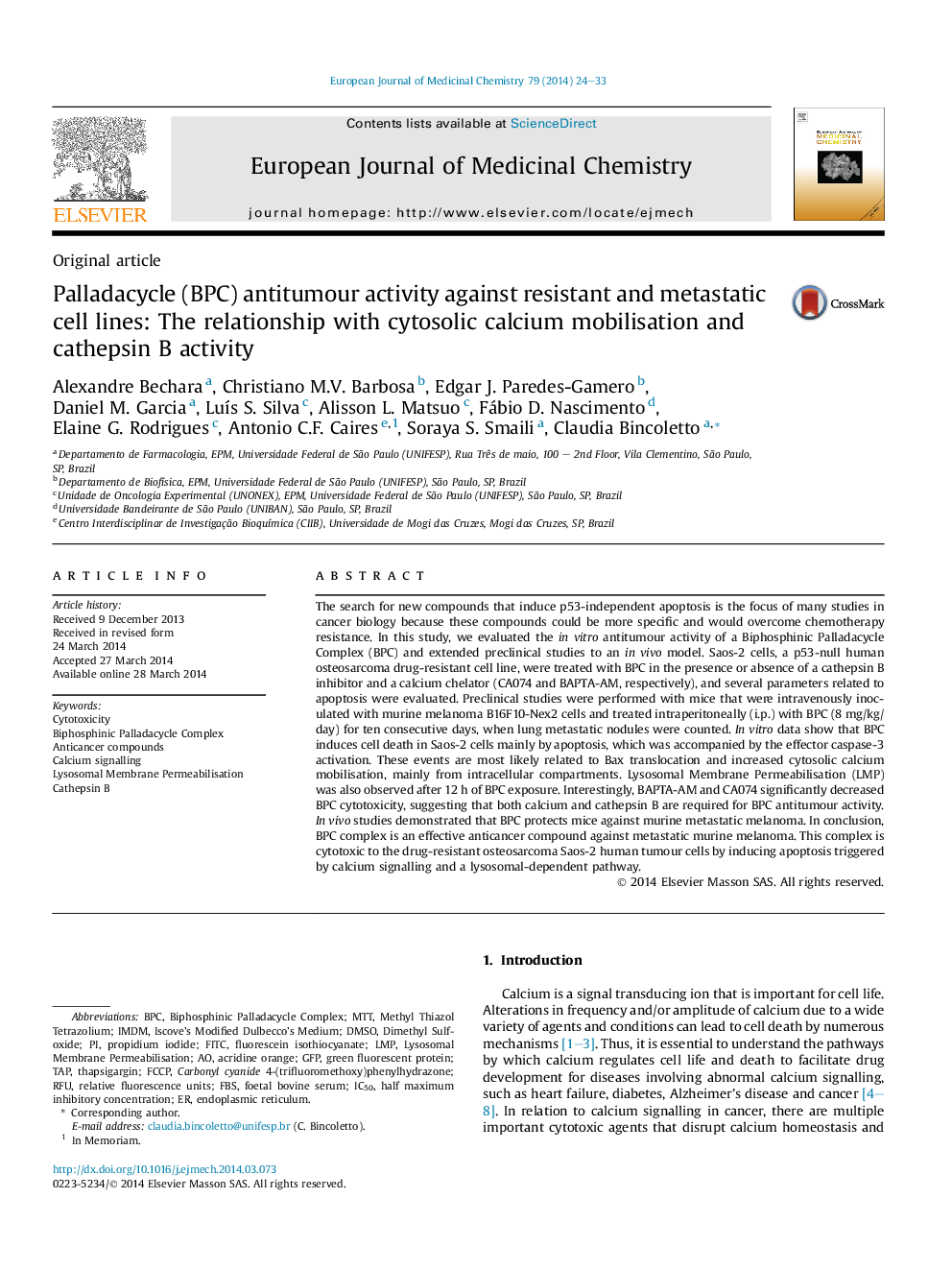| کد مقاله | کد نشریه | سال انتشار | مقاله انگلیسی | نسخه تمام متن |
|---|---|---|---|---|
| 1397300 | 1501137 | 2014 | 10 صفحه PDF | دانلود رایگان |

• BPC induces cell death by apoptosis and necrosis in osteosarcoma cells in vitro.
• Lysosomal Membrane Permeabilisation (LMP) was observed after 12 h of BPC exposure.
• BPC-induced cell death occurs in a calcium and a cathepsin B dependent manner.
• Caspase-3 activation and Bax-translocation are also involved in BPC cytotoxicity.
• In vivo studies showed that BPC also significantly reduces lung melanoma metastatic cell nodules.
The search for new compounds that induce p53-independent apoptosis is the focus of many studies in cancer biology because these compounds could be more specific and would overcome chemotherapy resistance. In this study, we evaluated the in vitro antitumour activity of a Biphosphinic Palladacycle Complex (BPC) and extended preclinical studies to an in vivo model. Saos-2 cells, a p53-null human osteosarcoma drug-resistant cell line, were treated with BPC in the presence or absence of a cathepsin B inhibitor and a calcium chelator (CA074 and BAPTA-AM, respectively), and several parameters related to apoptosis were evaluated. Preclinical studies were performed with mice that were intravenously inoculated with murine melanoma B16F10-Nex2 cells and treated intraperitoneally (i.p.) with BPC (8 mg/kg/day) for ten consecutive days, when lung metastatic nodules were counted. In vitro data show that BPC induces cell death in Saos-2 cells mainly by apoptosis, which was accompanied by the effector caspase-3 activation. These events are most likely related to Bax translocation and increased cytosolic calcium mobilisation, mainly from intracellular compartments. Lysosomal Membrane Permeabilisation (LMP) was also observed after 12 h of BPC exposure. Interestingly, BAPTA-AM and CA074 significantly decreased BPC cytotoxicity, suggesting that both calcium and cathepsin B are required for BPC antitumour activity. In vivo studies demonstrated that BPC protects mice against murine metastatic melanoma. In conclusion, BPC complex is an effective anticancer compound against metastatic murine melanoma. This complex is cytotoxic to the drug-resistant osteosarcoma Saos-2 human tumour cells by inducing apoptosis triggered by calcium signalling and a lysosomal-dependent pathway.
Figure optionsDownload as PowerPoint slide
Journal: European Journal of Medicinal Chemistry - Volume 79, 22 May 2014, Pages 24–33